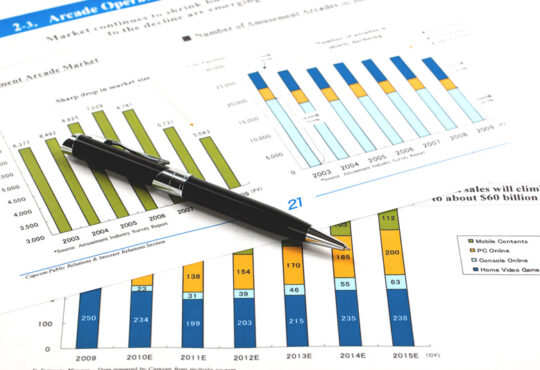
WASHINGTON — America’s employers delivered another healthy month of hiring in June, adding 206,000 jobs and once again displaying the U.S. economy’s ability to withstand high interest rates.
Last month’s job growth did mark a pullback from 218,000 in May. But it was still a solid gain, reflecting the resilience of America’s consumer-driven economy, which is slowing but still growing steadily.
Still, Friday’s report from the Labor Department contained several signs of a slowing job market. The unemployment rate ticked up from 4% to 4.1%, a still-low number but the highest rate since November 2021. The rate rose in large part because 277,000 people began looking for work in June, and not all of them found jobs right away.
The government revised down its estimate of job growth for April and May by a combined 111,000. It said average hourly pay rose just 0.3% from May and 3.9% from June 2023.
People are also reading…
The year-over-year figure was the smallest such rise since June 2021 and will likely be welcomed by the Federal Reserve in its drive to fully conquer inflation. Most economists think the Fed will begin cutting its benchmark rate in September, and the details in Friday’s jobs report did nothing to counter that expectation.
Just two sectors — government and a category that includes health care and social assistance — accounted for about three-quarters of June’s job growth. Economists also noted that job growth from April through June averaged 177,000, a decent figure but still the lowest three-month average since January 2021.
Other economists, while agreeing that the job market is slowing, suggested it remains resilient.
“Both May and June hiring was above 200,000 even after revisions, and the trajectory looks stable,” said Eric Winograd, U.S. economist at AllianceBernstein. “The best available evidence is that the labor market remains strong and that any deceleration remains modest.”
The state of the economy weighs heavily on voters’ minds as the presidential campaign intensifies. Despite consistent hiring, relatively few layoffs and gradually cooling inflation, many Americans are exasperated by still-high prices and assign blame to President Joe Biden.
Economists repeatedly predicted the job market would lose momentum in the face of the high rates engineered by the Fed, only to see the hiring gains show continued strength.
Still, signs of an economic slowdown have emerged in the aftermath of the Fed’s series of rate hikes. The U.S. gross domestic product — the total output of goods and services — grew at a lethargic annual pace of 1.4% from January through March, the slowest quarterly pace in nearly two years.
Consumer spending, which accounts for about 70% of all U.S. economic activity and which has powered the expansion the past three years, rose at just a 1.5% pace last quarter after growing more than 3% in each of the previous two quarters. In addition, the number of advertised job openings has declined steadily since peaking at a record 12.2 million in March 2022.
During 2022 and 2023, the Fed raised its benchmark interest rate 11 times to try to conquer the worst streak of inflation in four decades, lifting its key rate to its highest point in 23 years. The punishingly higher borrowing rates that resulted, for consumers and businesses, were widely expected to trigger a recession. They didn’t. The economy and the job market instead have shown surprising resilience.
Meanwhile, inflation has steadily declined from a 9.1% peak in 2022 to 3.3%. In remarks this week at a conference in Portugal, Fed Chair Jerome Powell noted that price increases in the United States were slowing again after higher readings this year. Powell did caution that further evidence that inflation is moving toward the Fed’s 2% target level would be needed before the policymakers would cut rates.
“This is the kind of report that the Federal Reserve wants to see,” said Gus Faucher, chief economist at PNC Financial Services Group. “This looks pretty darn good. The labor market is not as strong as it was last year at this time. But the labor market at that time was unsustainably strong.”
Chris Thomas, an engineering manager in Christiansburg, Virginia, said he can see first-hand that the job market lost momentum. When Thomas began a previous job hunt back in 2021, when tech startups were desperate to hire, he landed interviews with about a third of the companies he applied to. It took him just a month to find a job.
After he was laid off in April from a job at a startup, it was clear that the landscape changed. First, he sought leads through his network of friends and business associates. No luck. Then he sent out hundreds of resumes to positions he thought he was qualified to take. He drew few responses.
Finally, after a nearly three-month search, Thomas landed a job at the end of June.
“This is a very, very different job market than the one we had three years ago,” he said.
These industries had the biggest swings in job openings
These industries had the biggest swings in job openings
Job openings have been at some of their lowest levels nationally since February 2021, Bureau of Labor Statistics data shows. However, openings remain elevated compared to the two years before the COVID-19 pandemic, with 8.1 million open jobs at the end of May 2024—about 1 million above pre-pandemic levels.
While Americans still find themselves largely employed, their capacity to resign and switch jobs is quickly falling to levels before the Great Resignation, when the quit rate reached 3% at its peak in spring 2022. Across industries, employers continued adding jobs, upping employment by 272,000 in May, with the majority of gains in health care, government, and leisure and hospitality. The unemployment rate remained relatively consistent, measuring at 4%.
Excess labor demand is declining, and the labor market is rebalancing, Conrad DeQuadros, a senior economic adviser at Brean Capital, told Reuters. For workers, this means less confidence in finding new employment outside their current jobs. For employers, it could mean tempering wage inflation as demand for labor slows.
To discover which industries are driving the job market, Stacker used data from the Bureau of Labor Statistics’ Job Openings and Labor Turnover report to see which industries added jobs in May and which saw openings shrink. Industries are ranked by the percent change in job openings from May 2023 to 2024 and appear from the largest decreases to the largest increases. Monthly data is preliminary.
The BLS records job openings on the last business day of the month and calculates the rate as a percent of total employment plus job openings within the industry. The list below provides a snapshot of the economic activity across categories—retail, finance, construction, and more.
You may also like: A look at the average consultant salary by industry

#18. Retail trade
– Total job openings, May 2024: 478,000
— Annual change: -274,000 (down 36.4%)
— One-month change: -16,000 (down 3.2%)
– Job openings rate: 3%
#17. Accommodation and food services
– Total job openings, May 2024: 771,000
— Annual change: -374,000 (down 32.7%)
— One-month change: -147,000 (down 16%)
– Job openings rate: 5.1%
#16. Transportation, warehousing, and utilities
– Total job openings, May 2024: 350,000
— Annual change: -167,000 (down 32.3%)
— One-month change: +16,000 (up 4.8%)
– Job openings rate: 4.7%
#15. Wholesale trade
– Total job openings, May 2024: 188,000
— Annual change: -79,000 (down 29.6%)
— One-month change: -1,000 (down 0.5%)
– Job openings rate: 3%
#14. Nondurable goods manufacturing
– Total job openings, May 2024: 174,000
— Annual change: -54,000 (down 23.7%)
— One-month change: +17,000 (up 10.8%)
– Job openings rate: 3.5%
You may also like: Workers suffer the most injuries in these 25 jobs
#13. Information
– Total job openings, May 2024: 134,000
— Annual change: -28,000 (down 17.3%)
— One-month change: +24,000 (up 21.8%)
– Job openings rate: 4.2%
#12. State and local education
– Total job openings, May 2024: 295,000
— Annual change: -47,000 (down 13.7%)
— One-month change: +26,000 (up 9.7%)
– Job openings rate: 2.7%
#11. Construction
– Total job openings, May 2024: 339,000
— Annual change: -38,000 (down 10.1%)
— One-month change: +2,000 (up 0.6%)
– Job openings rate: 4%
#10. Mining and logging
– Total job openings, May 2024: 27,000
— Annual change: -3,000 (down 10%)
— One-month change: +3,000 (up 12.5%)
– Job openings rate: 4.2%
#8. Professional and business services
– Total job openings, May 2024: 1.5 million
— Annual change: -112,000 (down 7%)
— One-month change: +44,000 (up 3.1%)
– Job openings rate: 6.1%
#7. Arts, entertainment, and recreation
– Total job openings, May 2024: 151,000
— Annual change: -5,000 (down 3.2%)
— One-month change: 0 (up 0%)
– Job openings rate: 5.4%
#6. Private educational services
– Total job openings, May 2024: 184,000
— Annual change: -6,000 (down 3.2%)
— One-month change: -34,000 (down 15.6%)
– Job openings rate: 4.5%
#5. Health care and social assistance
– Total job openings, May 2024: 1.6 million
— Annual change: -43,000 (down 2.6%)
— One-month change: +78,000 (up 5%)
– Job openings rate: 6.8%
#3. Finance and insurance
– Total job openings, May 2024: 325,000
— Annual change: +25,000 (up 8.3%)
— One-month change: +5,000 (up 1.6%)
– Job openings rate: 4.6%
#2. State and local government
– Total job openings, May 2024: 615,000
— Annual change: +61,000 (up 11%)
— One-month change: +117,000 (up 23.5%)
– Job openings rate: 6%
#1. Durable goods manufacturing
– Total job openings, May 2024: 428,000
— Annual change: +63,000 (up 17.3%)
— One-month change: +97,000 (up 29.3%)
– Job openings rate: 5%






